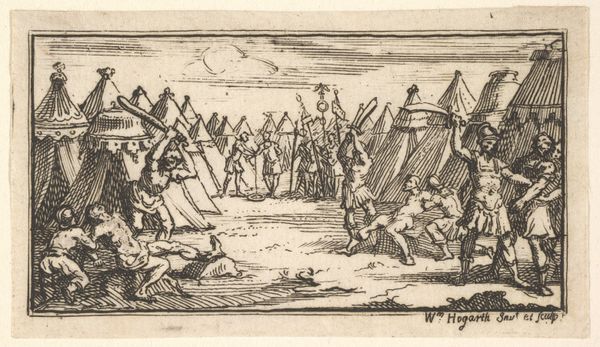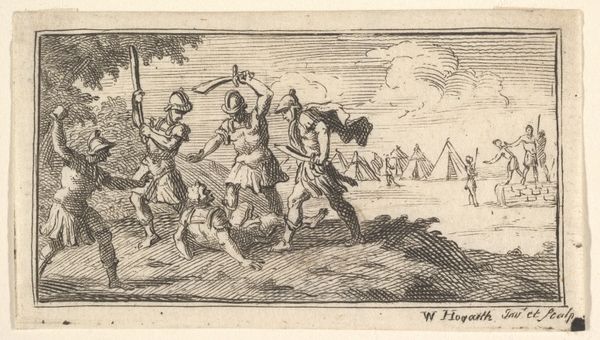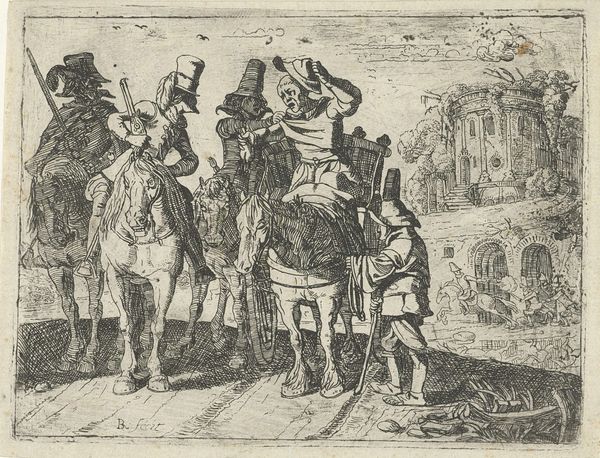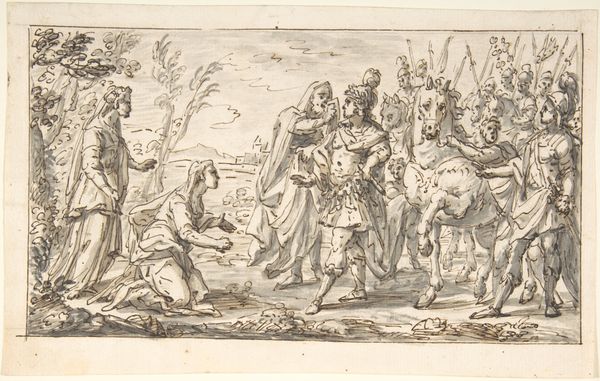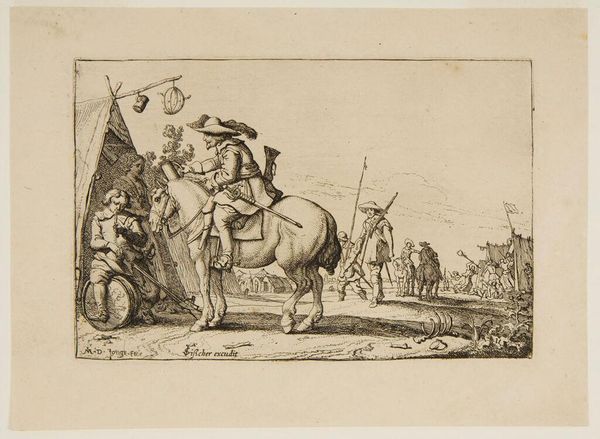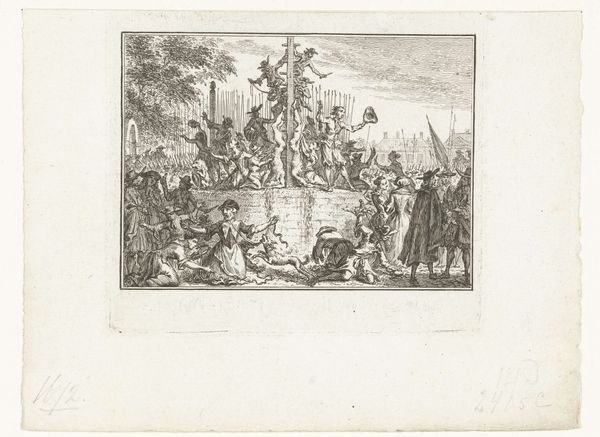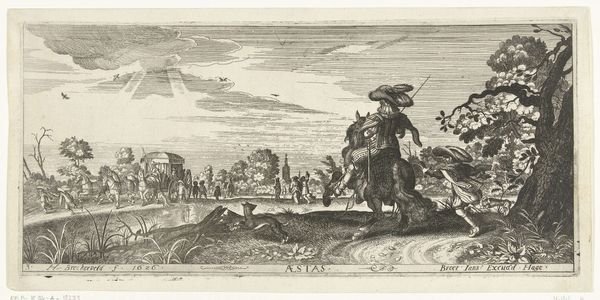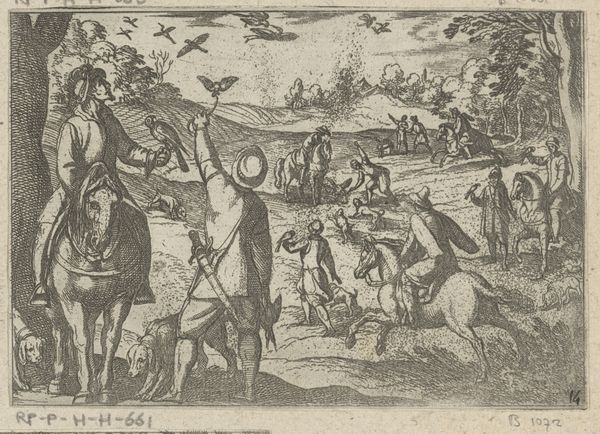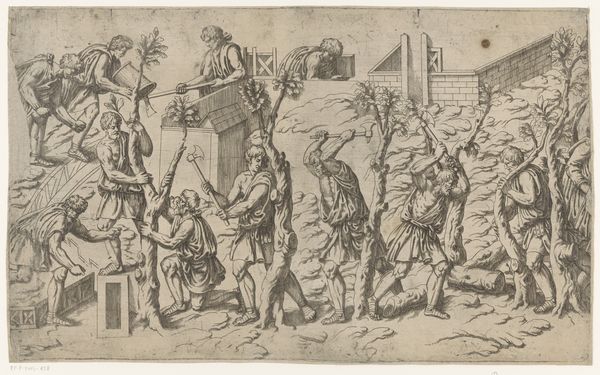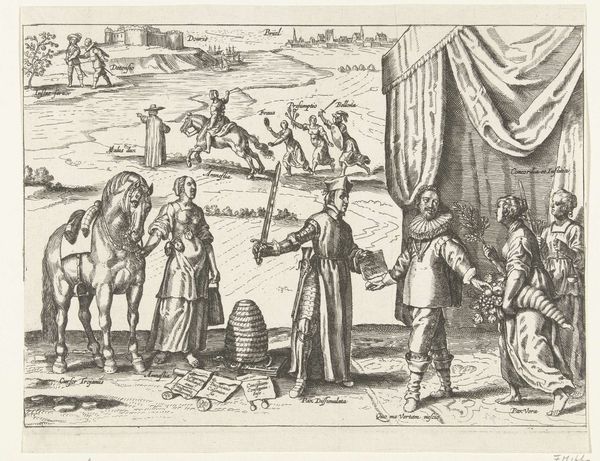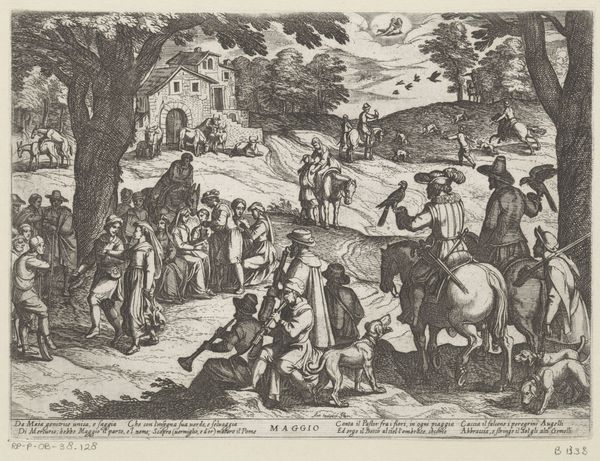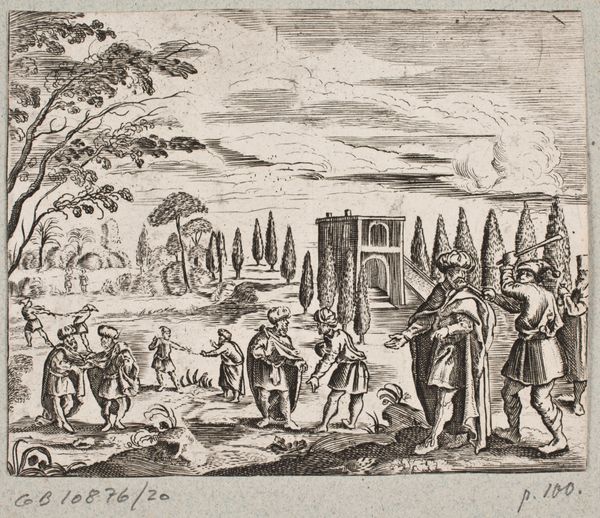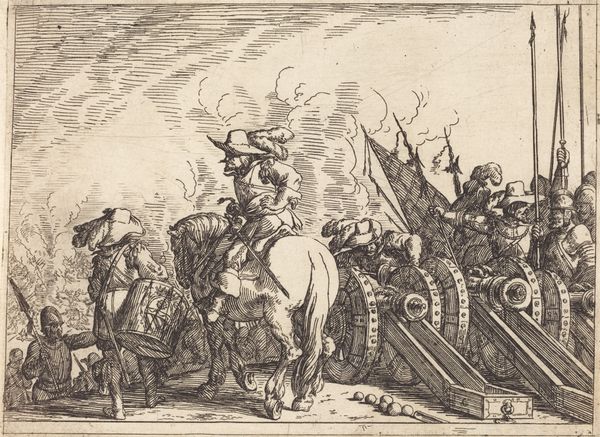
Hanging by the Thumbs (Modern Military Punishments) 1720 - 1779
0:00
0:00
drawing, print, etching, engraving
#
drawing
#
narrative-art
#
baroque
#
pen drawing
# print
#
pen illustration
#
pen sketch
#
etching
#
horse
#
men
#
history-painting
#
engraving
Dimensions: sheet: 1 3/4 x 3 1/16 in. (4.4 x 7.7 cm)
Copyright: Public Domain
Curator: The energy in this print is striking—almost frantic. The frenzied lines of the engraving seem to mirror the chaos depicted within the scene itself. It's incredibly dark. Editor: This is “Hanging by the Thumbs (Modern Military Punishments),” a pen drawing, etching, and engraving by William Hogarth, likely created between 1720 and 1779. The work is currently held at the Metropolitan Museum of Art. It offers a stark glimpse into the disciplinary practices of the time, a military punishment displayed for the gathered troops. Curator: Oh, brutal. I’m immediately drawn to the central figure suspended—his agony almost palpable, despite the distance of centuries. Hogarth doesn’t hold back, does he? There's this terrible symmetry, this visual "dance" around a core of intense suffering. Editor: Indeed. Hogarth uses his art as a vehicle for social commentary. This piece specifically confronts the abuse of power within the military. We must consider the broader implications of the depicted cruelty, connecting it to systems of oppression that were, and in many ways remain, normalized. The image of the gathered men reminds us of complicity and sanctioned violence. Curator: There's a distance, though, between us and them. A sort of theatrical remove, maybe? It feels carefully staged. Look at those men on horseback to the right. There is an almost casual nature in their expressions, contrasting horrifically with the tortured man in the center. Does that strike you too? It reminds me a bit of the idea of performance, but who is the intended audience, and why? Editor: That is astute. It compels us to question what Hogarth sought to reveal about power and those who wield it with impunity. Are these not the scenes that construct statehood? And who are we, the observers, in this historical performance? It prompts dialogue about military culture, its impacts on individuals and society, and echoes throughout modern-day conversations around military ethics and the potential for abuse inherent within hierarchies of power. Curator: The image haunts me—both a reflection of history and an unsettling mirror to present-day abuses of power. It lingers in the mind, long after you've walked away from it. Editor: Absolutely, and this serves as an important reminder to critically examine such legacies in modern contexts. Art like this helps us engage in discussions about creating a more just and ethical future.
Comments
No comments
Be the first to comment and join the conversation on the ultimate creative platform.
